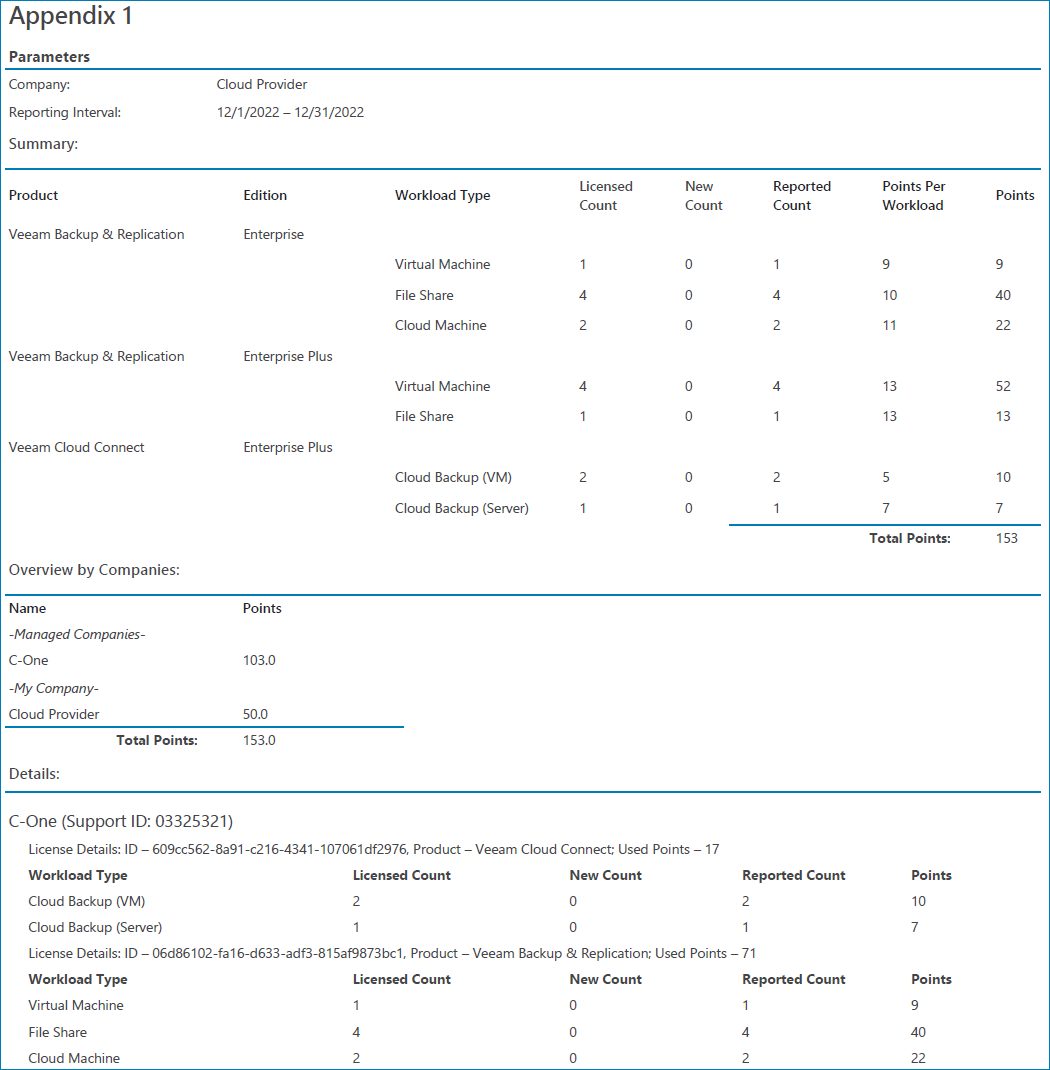Managing Resellers
Veeam Service Provider Console allows you to register and manage resellers that act as intermediaries between the service provider and the client company. A reseller is a company that uses the hardware resources of the service provider to render services to other companies in Veeam Service Provider Console. Resellers have similar capabilities to those of a service provider, but can only perform tasks that lie within allocated resource quotas.
Resellers can perform the following management tasks for the client company:
- Deployment, configuration and management of Veeam backup agents in the client infrastructure
- Management of Veeam Backup & Replication servers and jobs, Veeam Backup for Microsoft 365 jobs and Veeam Backup for Public Clouds policies
- License management for client Veeam backup agents, Veeam Backup & Replication, Veeam ONE and Veeam Backup for Microsoft 365
For details on resellers, see section Managing Resellers in the Guide for Service Providers.
Creating Reseller Account
To configure resellers and allow them to manage client companies, an environment with two logical sites is required:
- The management site, where the Veeam Service Provider Console is deployed. This site provides hardware resources to the reseller.
- The client site, where the client infrastructure resides. This site includes the workloads that the reseller manages.
The management and client sites normally belong to different networks, separated by WAN links. However, for evaluation, these sites can be parts of the same network.
To delegate the management of a client company to a reseller in Veeam Service Provider Console:
- Register a reseller account in Veeam Service Provider Console.
After you register a reseller account in Veeam Service Provider Console, you can specify which Veeam Cloud Connect servers to allocate to the reseller and the number of client company accounts that the reseller can manage. For details, see section Specify Site Scope in the Guide for Service Providers.
- Specify which services a reseller can provide to client companies, and allocate the associated service quotas.
For details, see section Allocate Service Quota in the Guide for Service Providers.
- Specify which cloud services a reseller can provide to client companies, and allocate the associated service quotas.
For details, see section Modifying Reseller Cloud Resources in the Guide for Service Providers.
- Add client companies to the reseller management scope.
Resellers can only manage companies that are included in their management scope. To add a company to the reseller management scope:
- You can assign a client company to the reseller.
For details, see section Assign Companies in the Guide for Service Providers.
- The reseller can create a new company in the Reseller Portal.
For details, see section Creating Companies in the Guide for Resellers.
- Configure VCSP Pulse integration.
To allow Veeam Service Provider Console communicate with VCSP Pulse, you must configure the application plugin and enable integration features. For details, see Integration with VCSP Pulse Plugin.
- Assign license keys to the reseller.
You can provide resellers with license keys for managed products in the VCSP Pulse plugin. For details, see section Assigning License Keys in the Guide for Service Providers.
Integration with VCSP Pulse Plugin
Veeam Service Provider Console offers integration with VCSP Pulse. Integration allows you and resellers to create VCSP Pulse license keys in Veeam Service Provider Console, and assign license keys to client companies without accessing the VCSP Pulse portal.
For details on configuring VCSP Pulse integration, see section Integration with VCSP Pulse in the Guide for Service Providers.
The VCSP Pulse plugin includes the following integration features:
- Company Management
This is the primary integration feature that allows you and the reseller to select companies whose data you want to share between Veeam Service Provider Console and VCSP Pulse. After this feature is enabled, Veeam Service Provider Console retrieves a list of managed companies from VCSP Pulse. You and the reseller can then configure mapping to synchronize data about managed companies and enable further integration.
- License Key Management
This feature allows you and the reseller to create license keys in VCSP Pulse for products managed in Veeam Service Provider Console. After this feature is enabled, Veeam Service Provider Console retrieves a list of license keys from VCSP Pulse. You can then create new license keys and assign them to managed resellers and client companies. For details, see section Managing License Keys in the Guide for Service Providers.
Resellers can manage licenses that you assign to them. If you allocate a VCSP Pulse contract to the reseller, and the reseller configures VCSP Pulse integration, they can create and distribute their own license keys within the assigned points quota.
For details on configuring license creation for resellers, see section Configure License Management in the Guide for Service Providers.
Monitor Resource Usage
Veeam Service Provider Console offers a set of predefined alarms that allow you to monitor reseller resource usage. You can modify these alarms to fit your needs. You can also disable the alarms if you do not want to be notified when resellers exceed their allocated quotas. For details on modifying alarm rules and response actions, see section Modifying Alarm Settings in the Guide for Service Providers.
For details on available alarms, see section Alarms in the Guide for Service Providers.
Monitor License Usage
You can monitor the number of license instances consumed by reseller clients in Veeam Service Provider Console. Veeam Service Provider Console generates monthly license usage reports that include details on the workloads protected during the previous month for each reseller.
For details on working with licenses, see section Licensing in the Guide for Service Providers.


